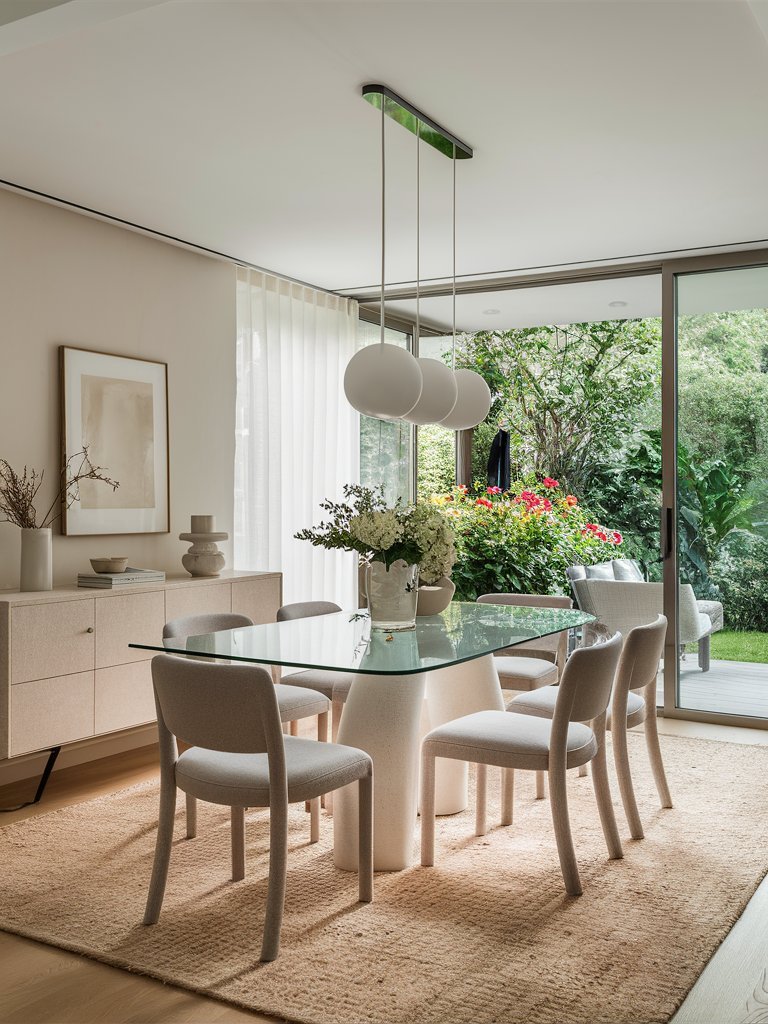
Adopting a greener lifestyle doesn’t always mean overhauling your entire home or making costly investments. Many people assume that living sustainably requires major renovations or expensive eco-friendly products, but the truth is that small, intentional changes in daily routines can make a remarkable difference. Every action, from the way we clean our kitchen counters to how we manage waste, contributes to a healthier planet and a more efficient household. These small steps often add up faster than we realize, creating a lasting positive impact without feeling overwhelming.
By rethinking how we consume resources, maintain our homes, and approach everyday habits, we can significantly reduce waste, save money, and lower our overall environmental footprint. Simple strategies like repurposing items, choosing energy-efficient alternatives, and making mindful purchases can transform a home into a space that is both eco-conscious and comfortable. Beyond sustainability, these changes often enhance the style and functionality of our living spaces, proving that eco-friendly living doesn’t have to compromise aesthetics or convenience.
These 18 eco-savvy home hacks are carefully selected to help you live more sustainably while improving your home environment. Let’s dive in and discover how simple choices can make a big difference for you and the planet.
Kitchen Hacks

1. Swap Plastic Wrap for Beeswax Wraps
Plastic wrap is one of the biggest sources of kitchen waste, but beeswax wraps are a simple alternative. These reusable sheets mold easily around bowls, fruits, or sandwiches using the warmth of your hands. When washed gently, they can last up to a year, saving dozens of rolls of plastic wrap. Plus, they’re biodegradable when worn out, making them an eco-friendly swap that’s just as practical as it is sustainable.
2. Compost Food Scraps
Instead of tossing food scraps into the trash, start a compost bin in your kitchen or backyard. Vegetable peels, eggshells, and coffee grounds can be transformed into nutrient-rich compost for plants. This not only reduces landfill waste but also cuts down methane emissions. Even if you live in an apartment, small countertop composters or community drop-off points make this hack accessible. It’s a win-win for your garden and the planet.
3. Store Food in Glass Jars
Glass jars are durable, reusable, and endlessly versatile. By saving jars from pasta sauce, honey, or pickles, you can create a zero-waste storage system for dry goods, leftovers, and bulk pantry items. They’re also see-through, making it easier to spot what you have at a glance, which reduces food waste from forgotten items. Unlike plastic, glass doesn’t absorb odors or chemicals, making it a safer option for your family’s food.
4. Energy-Efficient Cooking
Cooking smarter helps reduce both energy use and costs. Place lids on pots to trap steam and speed up cooking, batch cook meals so you can reheat instead of cooking from scratch, and try smaller appliances like toaster ovens, instant pots, or air fryers that consume less energy than a full oven. Even letting food defrost naturally instead of using a microwave helps save electricity. Small adjustments can add up to meaningful energy savings.
Cleaning Hacks

5. Make Your Own All-Purpose Cleaner
Most store-bought cleaners come in plastic bottles and contain chemicals that aren’t always safe for the environment. By mixing vinegar, water, and a few drops of essential oils, you can create an effective all-purpose cleaner that tackles countertops, sinks, and even mirrors. Store it in a reusable spray bottle and refill as needed. This simple DIY reduces plastic waste, saves money, and keeps your home free of unnecessary toxins.
6. Ditch Paper Towels for Cloths
The average household goes through countless rolls of paper towels each year, but reusable cloths are far more sustainable. Microfiber cloths or repurposed old t-shirts work perfectly for spills, dusting, and cleaning surfaces. After use, toss them in the wash and reuse them countless times. Not only will you reduce waste, but you’ll also cut household costs, since one set of clothes can last for years compared to single-use paper products.
7. Dryer Balls Instead of Sheets
Instead of using disposable dryer sheets filled with chemicals, switch to wool dryer balls. They soften fabrics naturally, reduce static, and even shorten drying time by improving air circulation. For a fresh scent, add a drop of essential oil to each ball before tossing them in the dryer. With proper care, dryer balls can last for over a thousand loads, making them a cost-effective and eco-friendly alternative to single-use sheets.
8. Cold Water Laundry
Around 90% of the energy used in washing machines goes into heating water. By washing your clothes in cold water, you’ll drastically reduce your energy consumption while also keeping fabrics in better condition. Many modern detergents are designed to work effectively in cold water, so you don’t sacrifice cleanliness. Combine this with shorter cycles or air drying, and your laundry routine becomes far more sustainable with minimal effort.
Living & Energy Hacks

9. Switch to LED Bulbs
Incandescent bulbs consume significantly more energy and burn out quickly. By switching to LED lighting, you’ll use up to 80% less electricity and enjoy bulbs that last years longer. LEDs also come in a variety of color tones, from warm to daylight, so you can tailor the atmosphere of each room. While the initial cost is slightly higher, the long-term savings in energy bills and replacements make this one of the easiest eco-hacks to adopt.
10. Unplug Idle Devices
Even when turned off, many electronics continue drawing power—a phenomenon known as phantom energy. Phone chargers, gaming consoles, and coffee makers are common culprits. By unplugging them when not in use or plugging them into a smart power strip, you’ll stop wasting energy unnecessarily. Over time, this small habit can significantly reduce your electricity bill while lowering your household’s overall energy footprint.
11. Air Dry Clothes When Possible
Clothes dryers consume a large amount of energy, but line-drying or using a drying rack can cut this out entirely. Air drying not only saves power but also extends the life of your clothes, keeping fabrics soft and colors vibrant. If outdoor space isn’t an option, an indoor rack near a sunny window works just as well. In warm weather, take advantage of the sun for naturally fresh-smelling laundry.
12. Layer Curtains for Energy Efficiency
Heating and cooling are some of the biggest energy expenses in most homes. By adding insulated or thermal curtains, you can better regulate indoor temperatures. During winter, they help retain warmth, while in summer, they block excess heat from entering. Pairing sheer curtains with heavier drapes gives you flexibility throughout the year, balancing comfort with efficiency. This simple upgrade creates a more eco-friendly and cost-effective household.
Lifestyle Hacks

13. Repurpose Glass & Tin Containers
Before tossing jars, cans, or boxes into the recycling bin, consider how they might be reused. Tin cans make great planters, glass jars can store craft supplies, and sturdy boxes are perfect for organizing drawers. Repurposing everyday items reduces demand for new containers while adding creativity to your home. Plus, DIY repurposing projects are fun, affordable, and often more stylish than store-bought storage solutions.
14. Grow Herbs Indoors
A small indoor herb garden can cut down on food packaging and reduce trips to the grocery store. Basil, parsley, mint, and thyme thrive in small pots or jars on a sunny windowsill. Not only will you enjoy fresh, organic herbs at your fingertips, but you’ll also reduce waste from plastic packaging and transportation emissions. Growing your own food, even in small amounts, makes a big difference in greener living.
15. Buy Secondhand Furniture
Instead of buying brand-new furniture, look for gently used pieces at thrift stores, flea markets, or online marketplaces. Secondhand shopping reduces demand for new materials, keeps items out of landfills, and often saves money. Many pieces can be refreshed with a coat of paint or new hardware, turning them into unique statement pieces. Choosing pre-loved items helps create a home that’s sustainable, affordable, and full of character.
16. Reusable Grocery Bags
Plastic bags are one of the biggest sources of environmental pollution. By carrying reusable grocery bags, you’ll cut down significantly on single-use plastics. Keep a few foldable bags in your purse, car, or near the front door so they’re always handy. Choose sturdy, washable bags that last for years. Beyond groceries, they’re also great for shopping trips, picnics, and even carrying everyday essentials, making them a truly versatile eco-hack.
17. Filter Tap Water
Instead of relying on bottled water, switch to a water filter for your tap or a refillable pitcher. This reduces plastic waste and saves money in the long run. Glass or stainless steel bottles can then be used for carrying water on the go, keeping hydration convenient and eco-friendly. With cleaner, better-tasting water at home, you’ll also find less need to purchase packaged beverages.
18. Switch to Bar Soap & Shampoo Bars
Liquid soaps and shampoos usually come in plastic bottles, which add up to significant waste over time. Solid bar alternatives last longer, are often packaged in recyclable paper, and are just as effective. Many eco-friendly brands also make natural bars that are free from harmful additives. Switching to bars helps cut down plastic waste in the bathroom while creating a minimalist, clutter-free look in your shower.
Conclusion
Creating a greener home doesn’t have to be overwhelming. By introducing these 18 eco-savvy hacks into your daily life, you’ll save energy, reduce waste, and foster habits that benefit the environment. Remember, sustainable living isn’t about perfection, it’s about progress. Each eco-friendly choice you make helps build a healthier home and a better future for the planet.














